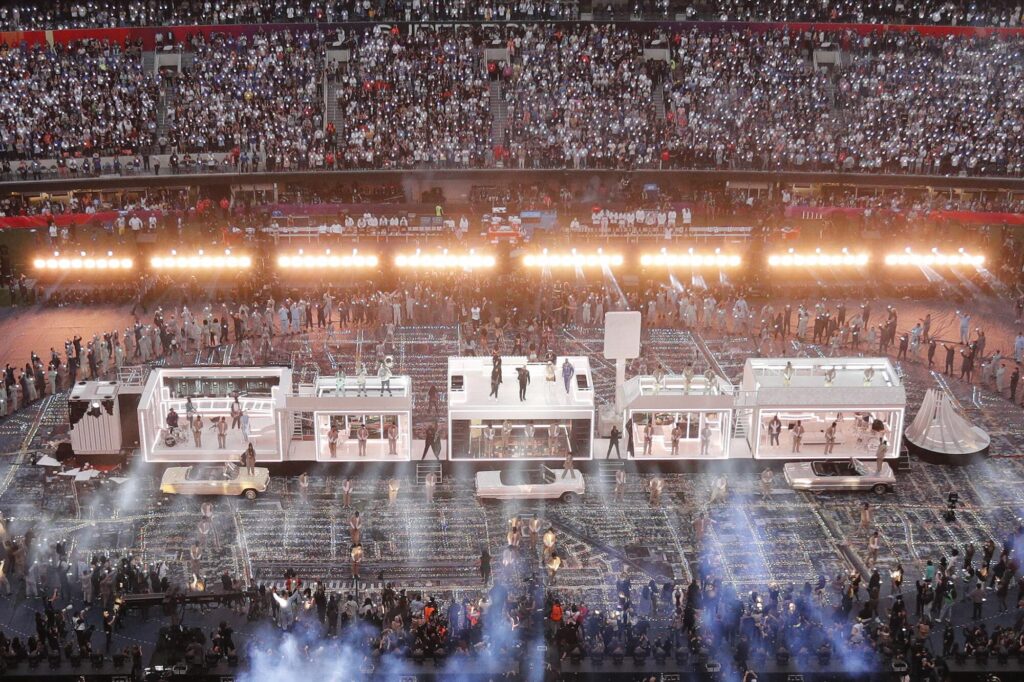Every February, millions of viewers around the world tune in not only for the biggest football game of the year, but for what has become a cultural spectacle: the Super Bowl. What was once a championship match has evolved into one of the most powerful marketing platforms on the planet. With over 100 million viewers each year, the Super Bowl offers a rare opportunity for brands, entertainers, and even fashion houses to reach a global audience in real time.
While commercial spots have always been a cornerstone of the event, with brands spending upwards of $7 million for 30 seconds of airtime, the halftime show has become just as critical for brand storytelling. Artists don’t just perform; they make statements, debut collaborations, and set trends that dominate headlines long after the game ends. The result is a layered branding opportunity where music, fashion, and messaging intersect under the brightest lights in entertainment.
In recent years, performers have used their stage time to do far more than promote their music. They’ve launched product lines, revealed personal news, and aligned themselves with major designers in a calculated effort to control narrative and maximize exposure. In this way, the Super Bowl has become a stage not just for talent but for strategic partnerships. Beyoncé’s 2016 halftime performance, for example, served as a bold political statement. Shakira and Jennifer Lopez’s 2020 performance was seen as a celebration of Latin culture. But perhaps one of the most striking moments in recent memory came in 2023.
During Super Bowl LVII, Rihanna returned to the stage after years away from live performances. Her comeback wasn’t just about music it was an orchestrated moment of branding genius. Her decision to reveal her pregnancy mid-performance was powerful on its own, but the visual impact of the Rihanna red Super Bowl outfit added a new layer of meaning. Designed by Loewe and Alaïa, the structured jumpsuit and bold outerwear became symbols of strength, style, and self-expression. The look was carefully considered, both a personal message and a global fashion moment. That single outfit generated millions of social media impressions, redefining what maternity fashion could look like on the biggest stage in sports.
This example highlights just how much influence the Super Bowl has beyond the field. Brands and public figures understand that every detail, down to a color choice or design silhouette, can be a branding moment that echoes for weeks. The strategic value lies not only in visibility but in relevance. When something resonates at the Super Bowl, it becomes part of the cultural conversation.
Even athletes are becoming brand storytellers in their own right. From custom cleats to pre-game tunnel fits, players use their appearance to send messages, support causes, and align with fashion labels. Just like performers on the halftime stage, they, too, are learning how to harness the spotlight to build their brands—sometimes with as much precision as a marketing team.
The Super Bowl is no longer just about touchdowns and trophies; it’s a globally watched event where visuals matter as much as victories. For companies, designers, and artists alike, it’s a once-a-year chance to speak to the world and when done right, the return on investment can be far more valuable than a winning score.







